Ice, ice, Baby.
7/8/2023. I tried some low-tech cooling to keep the camera below 50C this hot afternoon. That and selecting 16-bit capture (actually twelve, but anyway many more than eight) produced some pretty decent results with today's active Sun and reasonably steady air. I need to arrange a wick to guide meltwater away from where I do not want it. This kept things under 45C for at least 20 minutes.
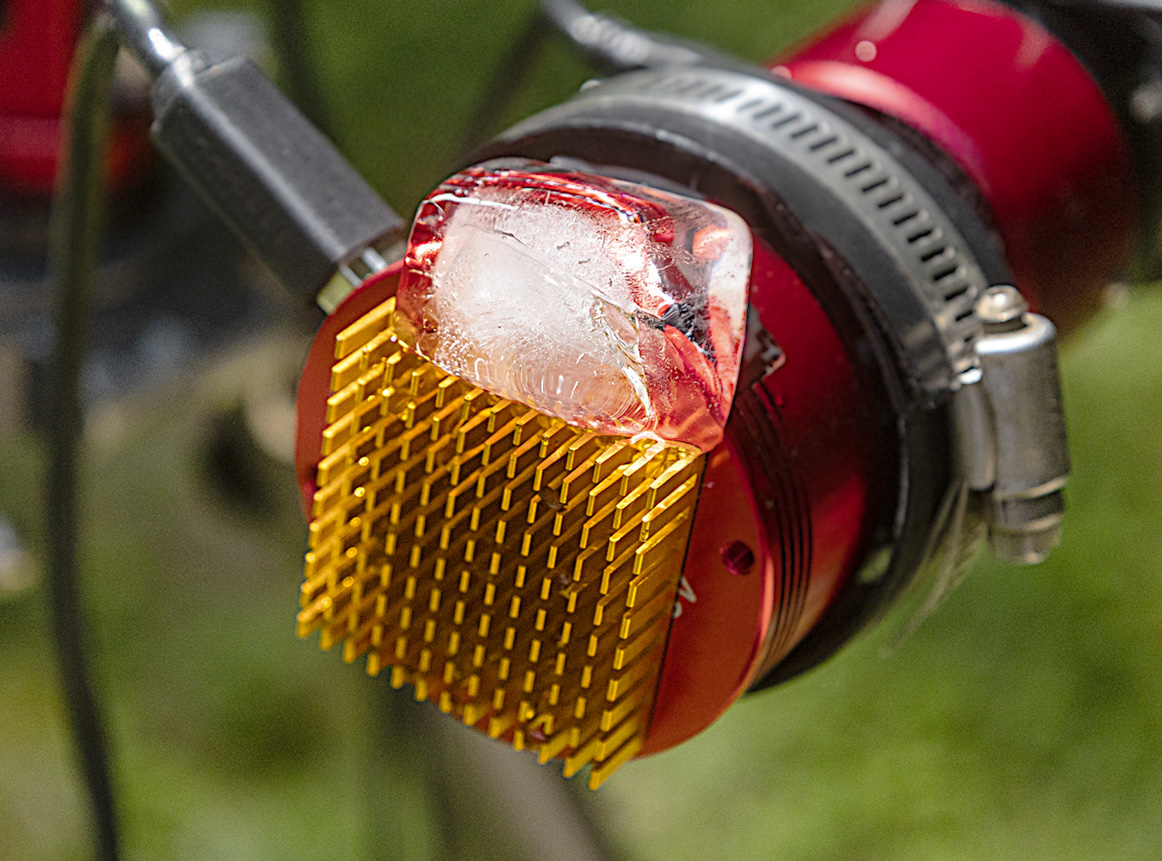
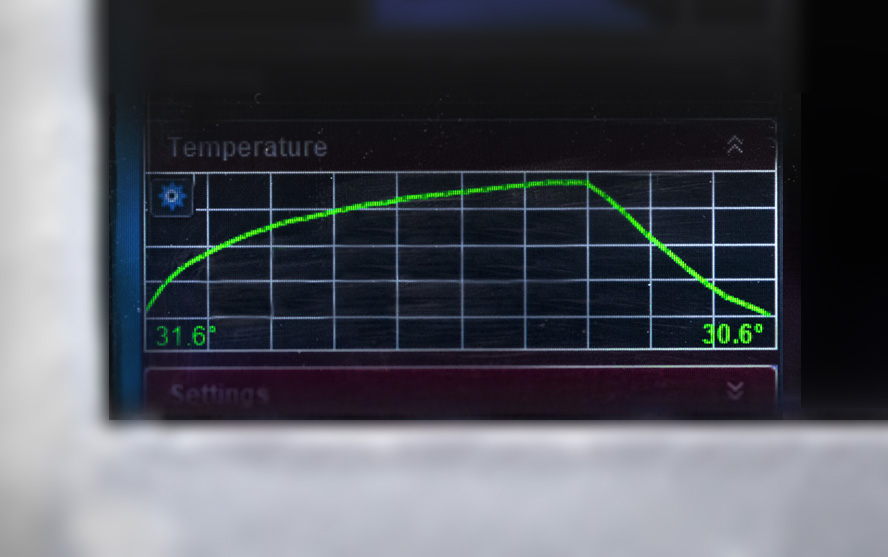
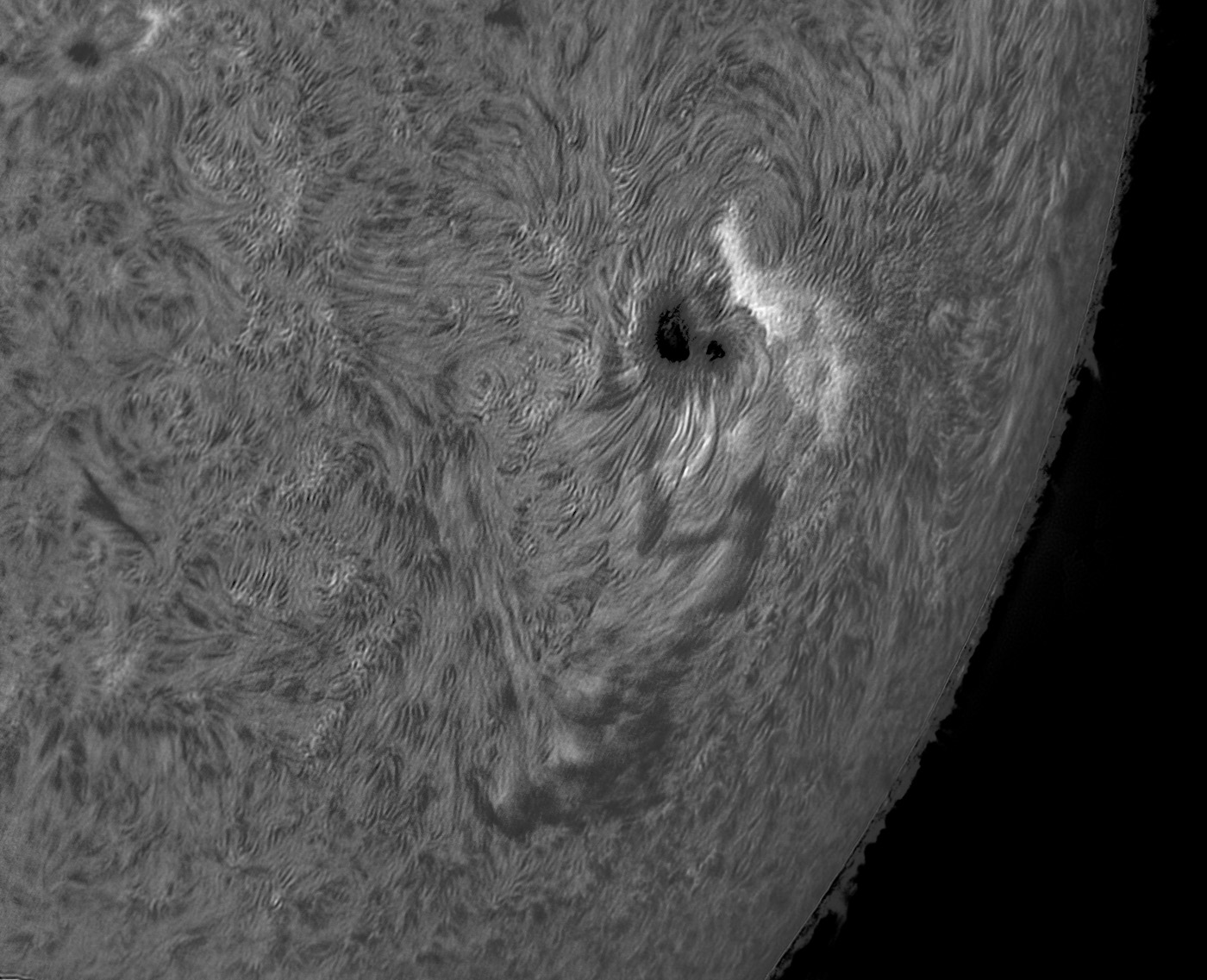
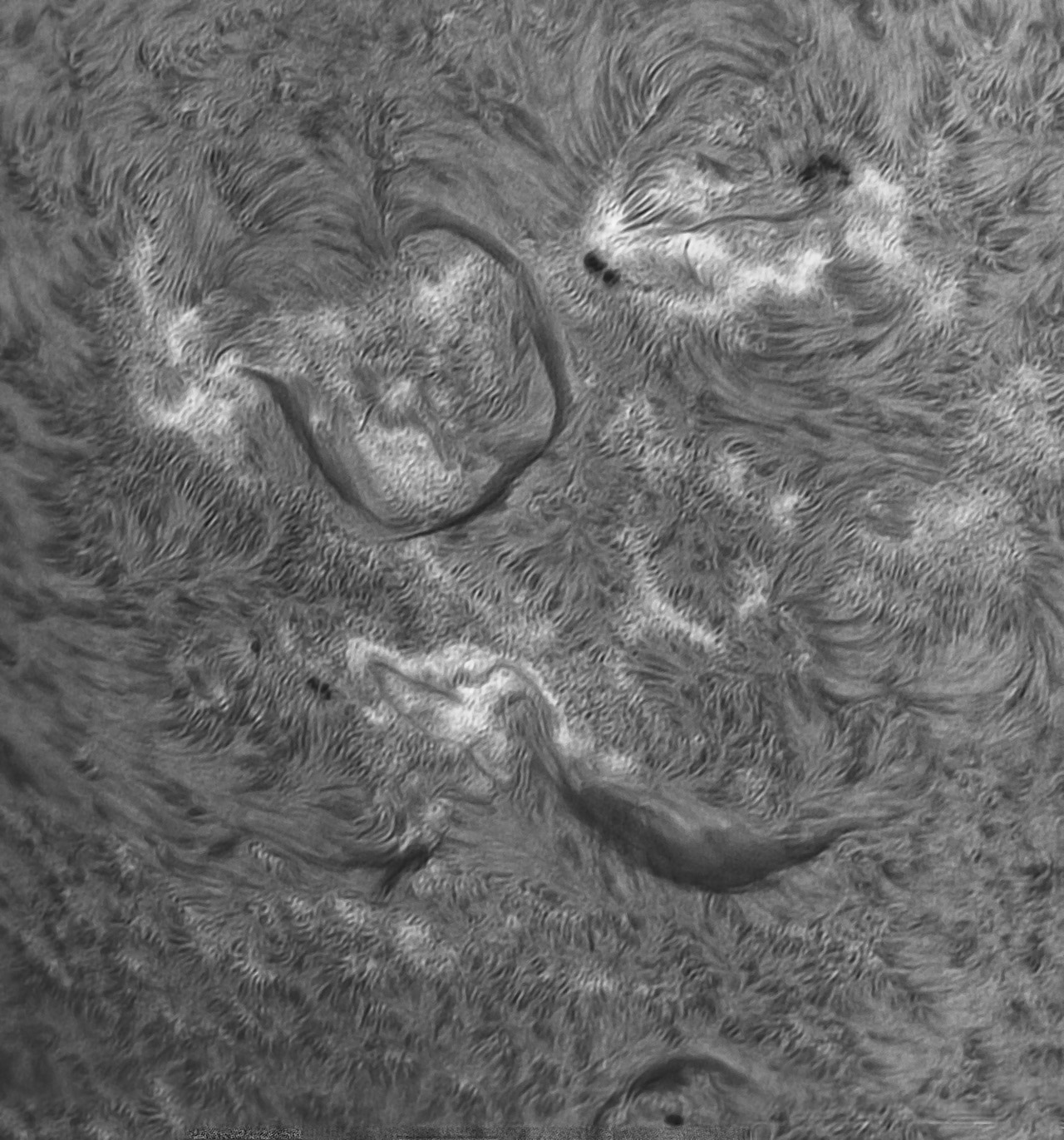

All are 16-bit captures (OK, 12 probably, but more than 8), the best 250-400 frames from 2,000 frame clips. Do the "right click, view image" thing to see all the pixels. I'll set up the "click the pic" code eventually. Probably.
7/9/2023. I thought I was going to get the day off. Lots of rain this morning. Then very clear, decently steady skies in the afternoon (hence the reversed image orientation: telescope was on the opposite side of the mount). This is the best 750 frames of 2,000.
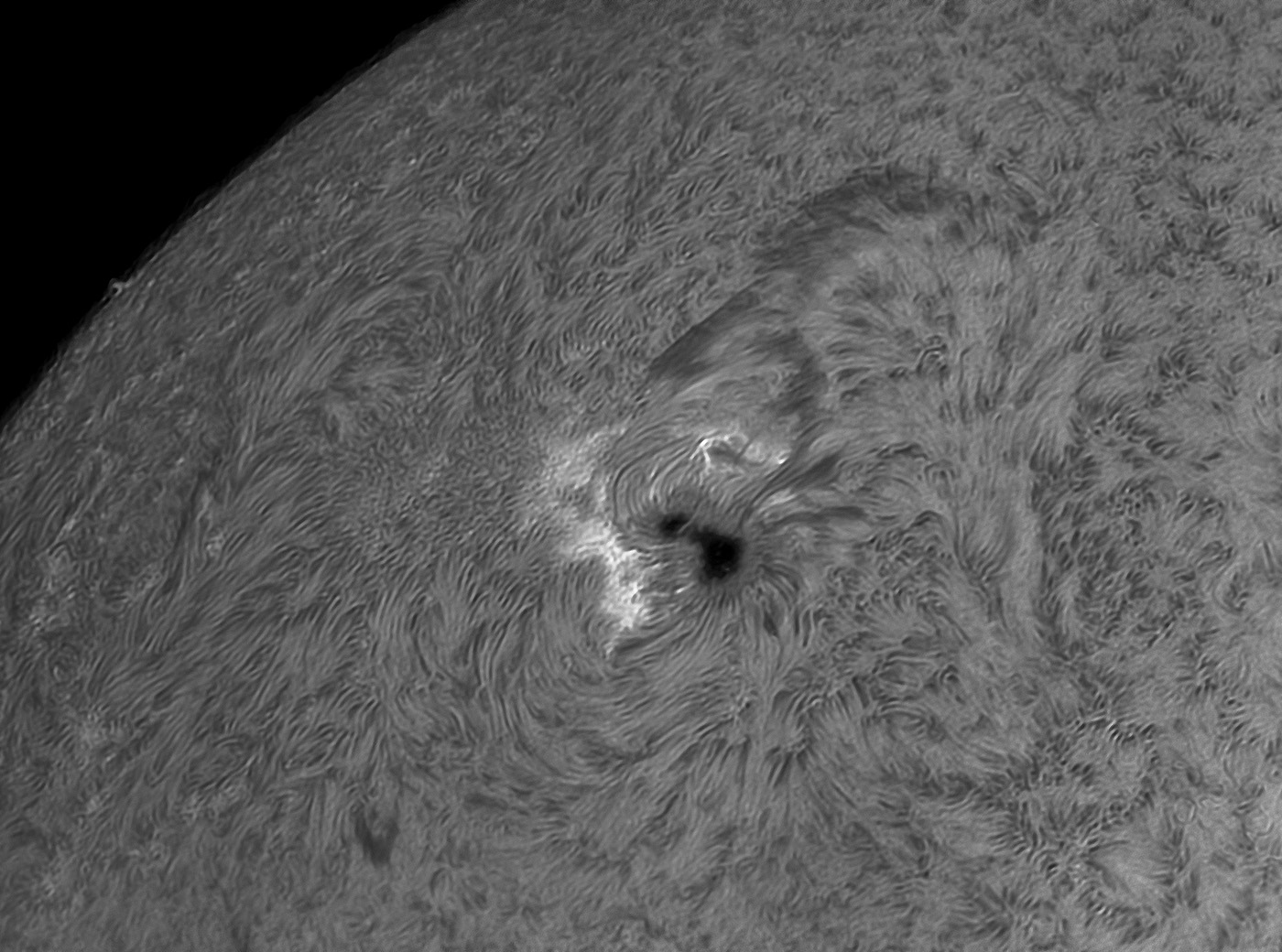
7/11/2023. That huge spot has almost reached the solar meridian, and the forecast for late morning was clear and very steady skies. Unfortunately, I got started an hour or so later. Just as I framed up the sunspot, clouds. When a large break in the clouds came along, the Sun was in the top of a tall pine (three weeks past the solstice is all it took!). And when the Sun cleared the pine, the computer's battery announced it had faded to a critical level. So, when everything did come together, seeing was good but not spectacularly good, and there were still clouds to dodge. I cannot for the life of me see very much difference in the next two photos. They were done back to back in consecutive gaps in scattered clouds, about 6ms exposures in Firecapture's 16-bit mode. One is the best 400 frames out of 2,000 and the other is the best 200 frames out of 700, a clip cut short by the intrusion of clouds. I'm not saying which is which. Try more experiments along these lines to see if this is peculiar to today's conditions. Maybe "16-bit" clips really don't need to be so long. Maybe lots of things.
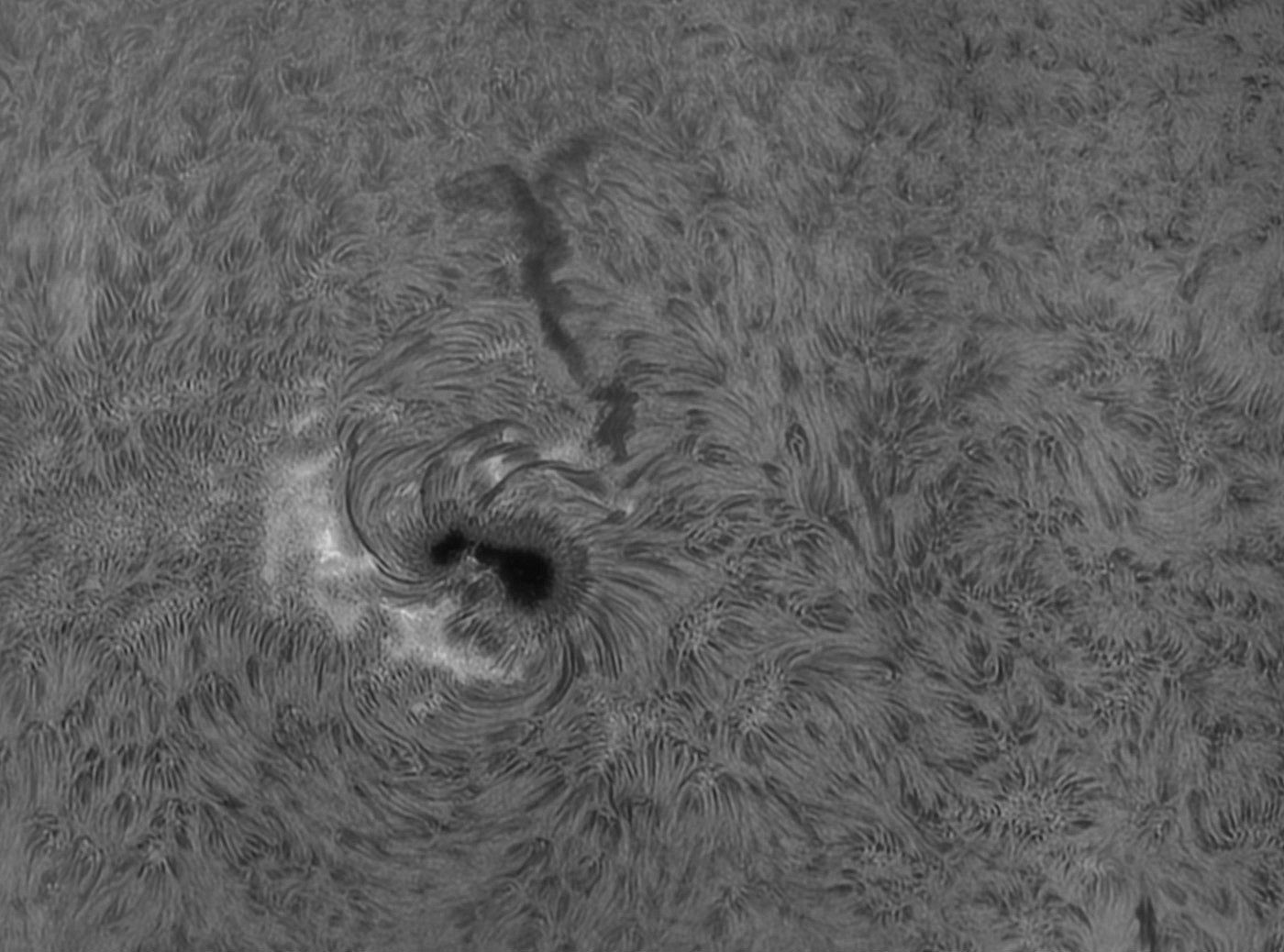
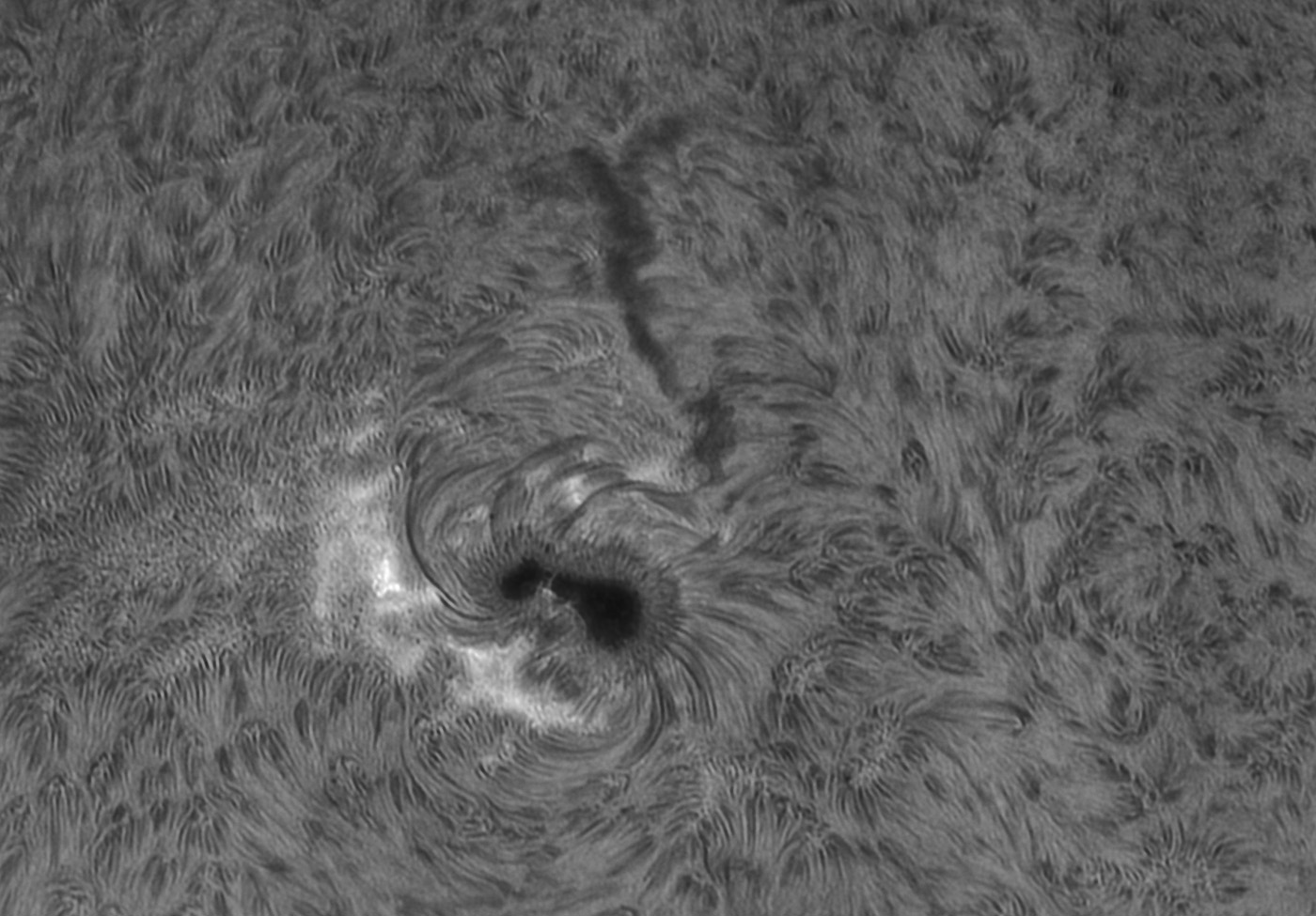
7/12/2023. The humongous spot passed the solar meridian today and this morning I was ready for it. I was up early watching an auction in London, so had no problem being ready for imaging at the earliest possible moment. There was some minor but spectacular flaring going on elsewhere, so I tried a couple of renditions of that. The big guy is the best 750 frames from 3,000 and the other views are the best 250 from 2,000.
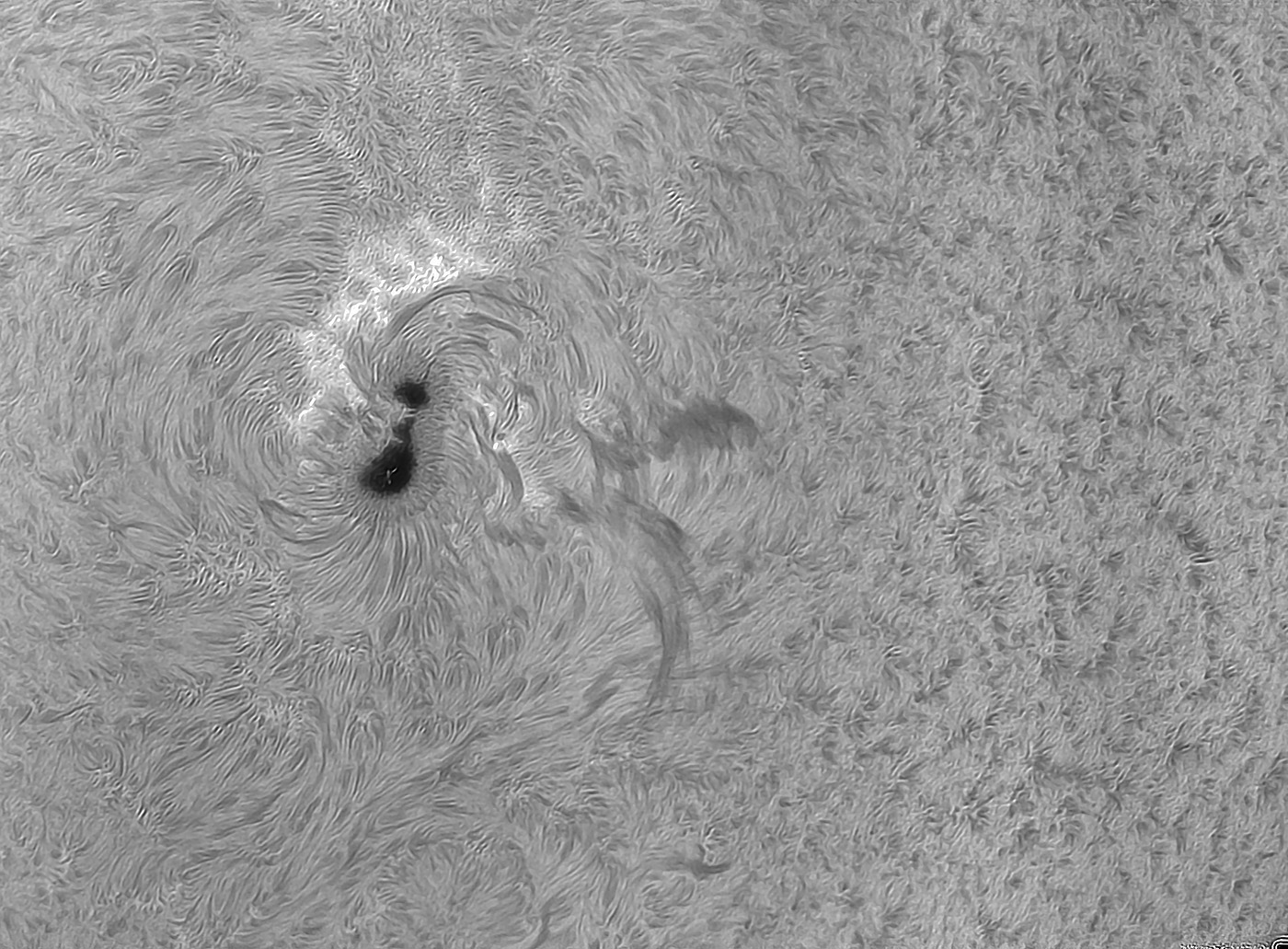
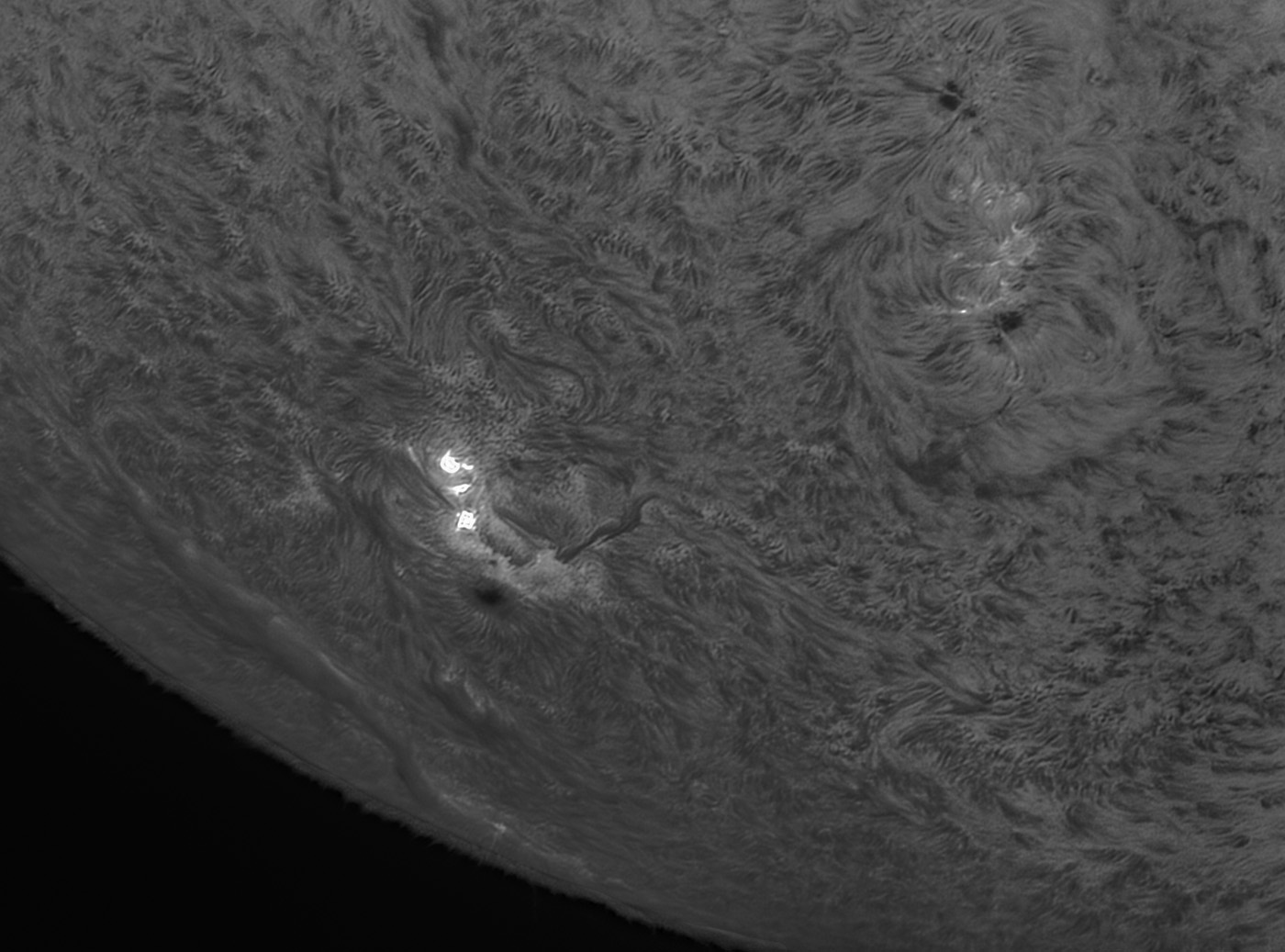
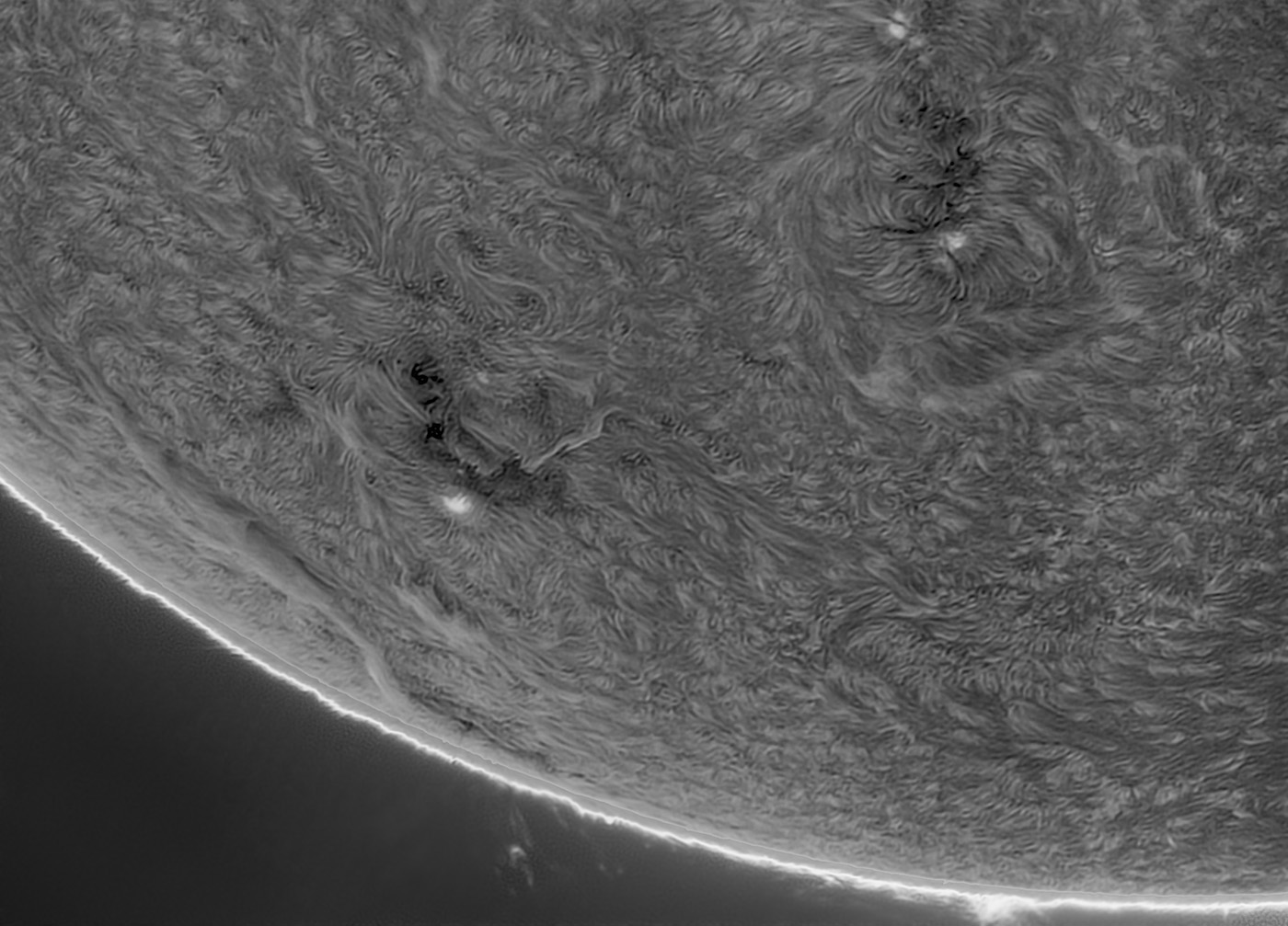
7/13/2023. No photos today. I was messing with a 50mm finder I modified for a short-focus guider to try full-disk imaging (actually more like half-disk, but still...). It may work, but focus will need some patient tweaking under a better sky, and I will need to stop it down to about 25mm to get a useful light cone for the Quark. In native form, it's only about F18 at the etalon. I could see only large broadband features on the Sun. The image was unclear and the bandwidth obviously quite broad. Let's say the resuls of the first tries were not good enough to be very encouraging, but they were not bad enough to be hopeless, either. More after I try the aperture stop...
My solar images beginning in June 2023 are made using a Daystar Quark Chromosphere filter on a TMB92SS refractor. A 2" Baader 7nm Ha filter and an A-P dielectric diagonal provide extra IR protection. The camera (~2021 et seq) is a ZWO ASI178MM chosen for its tiny pixels and fast capture rate. It is notorious for a nasty pattern noise which can be avoided with careful exposure or removed using FFT-based processing. I capture
data using FireCapture, stack using AS!3, deconvolve and perform initial histogram adjustments using IMPPG, and polish in Photoshop. The solar kit is mounted on a Skywatcher Star Adventurer "tracking platform."
:: top ::